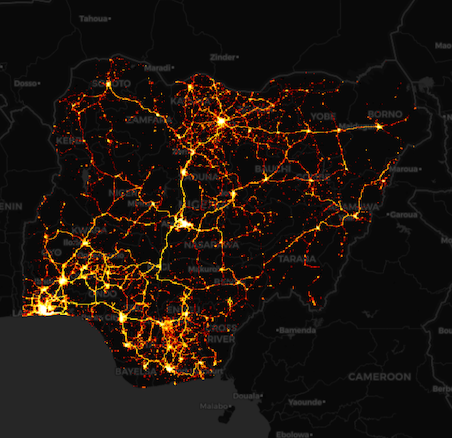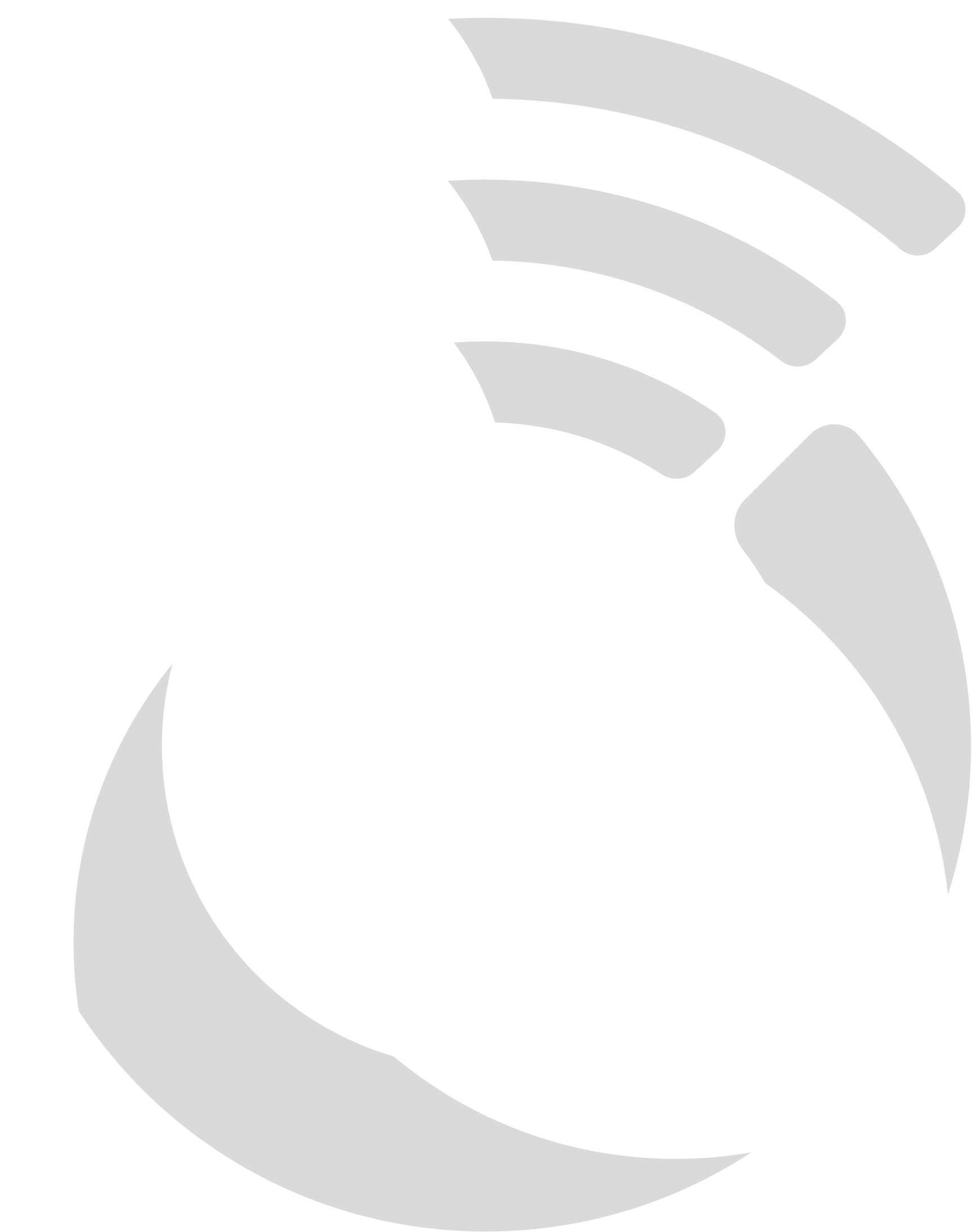Introduction
The mobile market in Nigeria is comprised of several operators, although MTN, Airtel, Glo and 9mobile dominate the market with close to 100% of market share. Thus, the network situation for these MNOs acts as a trustworthy barometer of the network situation in the country. A good knowledge of the network situation also allows the customers to perform fully informed decisions. The objective of this report is to provide a summary of the network situation in Nigeria for these four carriers.
This report provides a quick overview of the network situation based on the following KPIs:
- Disconnection time: time that the users of an MNO have had only emergency coverage or no coverage daily in average, in minutes.
- 4G and 5G time: time that the users of an MNO have had 4G and, if deployed, 5G coverage (including 5G NSA and 5G SA).
- 5G penetration and usage: percentage of users that have 5G connectivity and the percentage of time that 5G is actually used.
- Network status in the Common Coverage Area: an analysis of the network status, based on the signal strength and the signal quality, for the areas where all four MNOs provide coverage.
- Call technology usage: percentage of use of each call technology by MNO. This shows which technologies are mainly used by the customers.
- Mobile network latency: percentage of customers on different latency ranks. The ranks are selected according to several performance thresholds.
Summary
As one of the most populated countries (7th in the world, 1st in Africa) and an emergent and thriving market (31st in the world by GDP), Nigeria is fertile ground for an expansion of its telecommunications ecosystem. Getting the networks up to date and fully embracing the 4G and, specially, the 5G networks would boost the capacity and reach of Nigerian business, reducing the gap with more mature markets.
Although there have been great efforts to update Nigeria's networks, the data collected by Weplan Analytics shows that, in general, the four main mobile network operators (MNOs) have room for improvement and exhibit fairly unequal situations among them.
Concerning connectivity, the four MNOs have low disconnection times. MTN has the best disconnection time among Nigerian MNOs, with its users having less than 10 daily minutes of disconnection. On the other hand 9mobile, Airtel, and Glo users have an average of 17 daily minutes of disconnection. In addition, all four operators offer 4G or 5G coverage more than 58% of the time, although MTN and Airtel stand out from the rest of the operators by offering 4G/5G coverage an average of 73% of the time.
In terms of 5G penetration and usage, the only operator among the four biggest operators offering 5G is MTN, although they do not have a significant percentage of customers using this technology. Airtel recently acquired the rights to use 5G spectrum.
Regarding the mobile network situation, it is noteworthy that the four Nigerians MNOs offer decent 4G coverage in the areas where they are present. Regarding areas of Good or Very good network, 9mobile and Glo tops the list with 42% of the area classified as such, followed by Airtel with 38% and MTN with 33%. Those are figures that, although a testament to the MNOs effort to use 4G, offer wide room for improvement. It is worth noting that only MTN has a nationwide 4G coverage, whereas its competitors have a more limited geographic scope.
In relation to the distribution of call types made in Nigeria, it should be noted that VoLTE technology (offered only by MTN and Airtel) is not yet widely adopted in the country, being used, on average, 3% of the time. The majority of calls are made through 3G (either directly or via CSFB), accounting for an average of 85% of the calls. It is worth noting that calls made through 2G (either directly or via CSFB) remain relevant in Nigeria.
Finally, in terms of latency, the three main MNOs present a similar situation, with Glo having 64% of measurements with good latency, followed by Airtel and MTN with 61% and 60% respectively. This means that, on average, 38% of the time users of these MNOs will experience a degraded or bad user experience, not having access to 4K streaming, stable videochats or gaming. The smallest MNO among the four main carriers, 9mobile, is in fourth place with only 36% of its measurements classified as good regarding latency or, conversely, 64% of its measurements being degraded or bad.
The main key figures are as follows:
- The main operators in Nigeria (Airtel, Glo, MTN and 9mobile) offer 4G and 5G coverage at least 58% of the time. There are great differences between the ones with the highest coverage (MTN and Airtel, surpassing 70% of the time under 4G or 5G) and those with lowest (Glo and 9Mobile, with 62% and 58% of the time under 4G respectively).
- The only operator among the four biggest operators offering 5G is MTN. Furthermore, the usage of the 5G network and VoLTE technology is marginal.
- On average, 45% of all carriers' measurements have such a degraded latency that there would be no decent internet (videochat, gaming, streaming...) experience.
Methodology

In the following pages an in-depth description of each analyzed KPI can be found, including the methodology and rationale behind them. At a more general level, the following paragraph describes the data collection methodology.
At a more general level, Weplan Analytics collects crowdsourced data from more than 200 million devices in 31 countries. For this analysis, 1,278 million measurements collected between march and may 2023 were used.
The following map shows the density of measurements taken throughout the country by Weplan Analytics.
The most relevant insights can be found in the Summary section above. A detailed account of each one comprises the rest of the report below.
As the four aforementioned MNOs serve their networks to other parties (such as VMNOs, due to roaming agreements or as part of emergency coverage) the MNOs have been filtered by the network provider reported in the SIM card.
More details about the methodology can be found here.
Connectivity
Connectivity: Daily disconnection time
The following graphic shows the disconnection time as the average number of minutes that each customer of each MNO experiences disconnections throughout the day. Disconnection time includes moments when a customer has no coverage at all (for example in underground parkings, inside elevators, so far away from a site that connection is not possible...) or moments when a customer only has emergency coverage, that is, the ability to perform only emergency calls. This disconnected time may (and, in most cases, will) be discontinuous, and is the average of the daily disconnection time for all users.
In respect of the disconnection time, MTN has the best result, with only 9 daily minutes of disconnection. Airtel follows with 13 minutes per day, Glo with 17 minutes per day, and lastly, 9mobile with 22 daily minutes of disconnection time.
Connectivity: 4G and 5G time
With the advent of the newer 5G technology older technologies such as 2G and 3G are being turned off to free frequencies. Thus, guaranteeing at least a proper 4G coverage is one of the main goals of MNOs, and for those who already have 4G sorted out, the focus turns to 5G. In the case of Nigeria, although there have been 5G deployments, this network is marginal and the 4G network has still growth and improvement potential, as the 2G and 3G networks provide coverage almost one third of the time.
Regarding the 4G connectivity in Nigeria, MTN stands out from the rest of the operators by offering 4G coverage 75% of the time. Airtel, in second place, offers 4G coverage 71% of the time. Glo and 9mobile provide 4G coverage 62% and 58% of the time, respectively.
5G penetration and usage
The ability of a customer to use the 5G network depends on several factors. First, their device must be 5G compatible. Second, the MNO must have a 5G network. Finally, the client must contract a mobile plan that allows the 5G to be used, as not all MNOs offer full access to the 5G network as part of the regular plans.
Concerning the deployment of 5G in Nigeria, it is worth noting that the only operator among the four biggest MNOs offering 5G is MTN, although there is not a significant percentage of customers using this technology. MTN acquired 5G spectrum capacity in 2021, becoming the first operator in Nigeria to offer this technology to its customers starting on August 2022. Airtel, on the other hand, acquired a license in early 2023. The 5G deployment by MTN has been limited to some of the main cities in the country.
A third MNO, Mafab Communications, acquired 5G spectrum in the same bid as MTN. However, as a small MNO with a short history (founded in 2020) their market share and 5G rollout is of very limited scope, and started to provide 5G services starting on January 2023.
4G and 5G network status
There are two main network performance indicators: signal strength and signal quality. Each technology has its own measurements, but five great categories can be established:
- Very Good: the performance for all network usages will be excellent.
- Good: the performance for all network usages may present occasional difficulties but is overall good.
- Fair: most network-dependent usages (such as calls or data usage) will have a decent or better performance.
- Degraded: network usage will be unstable and unreliable but allows for basic usage such as calls with acceptable quality and very slow data transfer.
- Very Degraded: network usage different from emergency calls is nearly impossible.
There are two ways to establish this value: looking at the percentage of area and looking at the percentage of measurements on each category. Most measurements take place in urban areas, where coverage is better, but in most countries most of the area is not urban, so the percentage of area with a problematic network situation may be different to the percentage of measurements with a problematic network situation.
Given the significant disparities in market shares among the analyzed MNOs, the following figures make reference to the area where each MNO have deployments. MTN dominates the market with 43% market share and a nation-wide 4G deployment. On the other extreme is 9mobile with just 9% market share, and a 4G deployment limited mainly to urban areas. For this reason, instead of making a direct comparison, these results should be understood as a description of the network situation for each operator in their deployment area. Additionally, since the majority of connections are made on 4G, only this technology has been considered.
In general, all operators offer good coverage in the areas of Nigeria where they have deployed their networks. Both Airtel and 9mobile have 84% of the area with fair or better coverage. Glo has 80% of the area with this classification, and finally, MTN has 77% of the area classified as at least fair. However, it is worth noting that MTN has a far greater coverage than its competitors, including rural areas, where the connectivity is usually worse.
Regarding areas with a good or very good network coverage, 9mobile accounts for 42% of the area classified as such, Glo with 41%, Airtel with 39%, and MTN with 34% of the area having this classification.
If we look at individual measurements instead of the area, the overall situation is similar. 9mobile has 84% of measurements being fair or better. Airtel has 81%, Glo has 79%, and finally, MTN has 73% of measurements classified as such.
If we focus on Good and Very good measurements, 9mobile has 48% of the Good and Very good measurements, Airtel has 46%, Glo has 44%, and MTN has 38%.
Call type percentage
Although 2G and 3G are capable of data usage, the advent of 4G and more recently 5G technologies have relegated them to mostly call usage. The absence of 4G-based call technology ensured that 2G and 3G, as the only way to make a phone call, were still relevant. The development of VoLTE (Voice over LTE) calls during the 2010s marked the beginning of the end for these legacy technologies.
However, not all customers can benefit from VoLTE calls. For a customer to use this technology several conditions must be met:
- Their MNO must provide 4G and VoLTE.
- They must have a phone capable of performing VoLTE calls.
- They must have a phone rate that includes VoLTE calls.
- Their phone must be homologated by the MNO and the manufacturer to perform VoLTE calls.
The fourth condition means that a customer, without changing their phone, can have VoLTE with one MNO but lack it with a different MNO. When a customer connected to 4G without VoLTE capabilities (for any reason) tries to perform a call, a hand-off process to the 2G or 3G network takes place. This process, depending on the method applied, is called CSFB (the most common one) or SRVCC. Aside from those technologies, VoWiFi (Voice over Wi-Fi) is also used when a Wi-Fi network is available.
In Nigeria, the use of VoLTE technology is very low. Only Airtel and MTN have VoLTE. Airtel customers perform 9% of calls with this technology, whereas MTN customers use VoLTE technology only 4% of the time.
The majority of calls are made through 3G (either directly or via CSFB), with MTN customers using this technology 93% of the time, followed by Airtel (86%) and, finally, Glo and 9Mobile customers (statistically tied at 81% of the time).
It is worth noting that calls made using 2G (either directly or via CSFB) remain relevant in Nigeria, especially for Glo and 9Mobile, accounting for roughly 20% of the total calls.
Latency status
Latency is the measurement of how much time it takes for the information to be transmitted between the user and the network. A lower latency means a faster, smoother network experience, whereas a higher latency means that the network experience will not be as good, or even unusable. This makes latency a good indicator of user experience. We have divided latency in four great groups:
- Excellent latency translates to a very smooth user experience, even with the most data-intensive usage, such as gaming or 4K streaming.
- Good latency translates to a good user experience, although gaming may not be as fluid and 4K may present occasional problems.
- Degraded latency translates to a mediocre user experience. Gaming and 4K are either uncomfortable or impossible, videochat may present noticeable lag, messaging with multimedia may take a long time to load and loading a web may be slow.
- Bad latency translates to an essentially unusable network. Only the lightest usage, such as sending messages without multimedia works decently.
The four MNOs present a slightly different latency situation. Glo leads this category with 64% of its measurements classified as at least good, followed by Airtel and MTN with 61% and 60% respectively. In practice, this means that on average, for the three biggest MNOs, 38% of the measurements did not offer a latency good enough to perform comfortable gaming, 4K streaming or lagless videochat. In fourth place is 9mobile, with only 36% of its events classified as such. It is worth noting that, as 2G and 3G are still very relevant in Nigeria, these technologies may greatly impact latency measurements.
In relation to the percentage of events with excellent latency, the order remains the same: Glo with 37% of events with excellent latency, followed by Airtel and MTN with 34% and 33% respectively. In last place, 9mobile is found with 23% of events with excellent latency.

Sent successfully
Email sent with unlock instructions. Please check your inbox
Error sending form
There was an error processing this request. PLease try again later
To read the report please leave us your details:
An email will be sent to your address with a link to unlock it:
The information on this report is provided as of public interest by Weplan Analytics. The information on this report is provided by Weplan Analytics solely for the user's information and it is provided without warranty, guarantee or responsibility of any kind, either expressed or implied. Weplan Analytics and its employees will not be liable for any loss or damages of any nature, either direct or indirect, arising from use of the information provided in this report. Weplan Analytics is the owner of copyright in all material or information found on this report unless otherwise stated. All contents that are published in this report are safeguarded by copyright. This copyright includes the exclusive right to reproduce and distribute the contents, including reprints, translations, photographic reproductions, electronic forms (online or offline) or other reproductions of other similar kinds. Only non-commercial use may be beyond the limitations with prior written consent. Journalists are encouraged to quote information included in Weplan Analytics reports and insights as long as clear source attribution is provided. For more information, contact [email protected]

